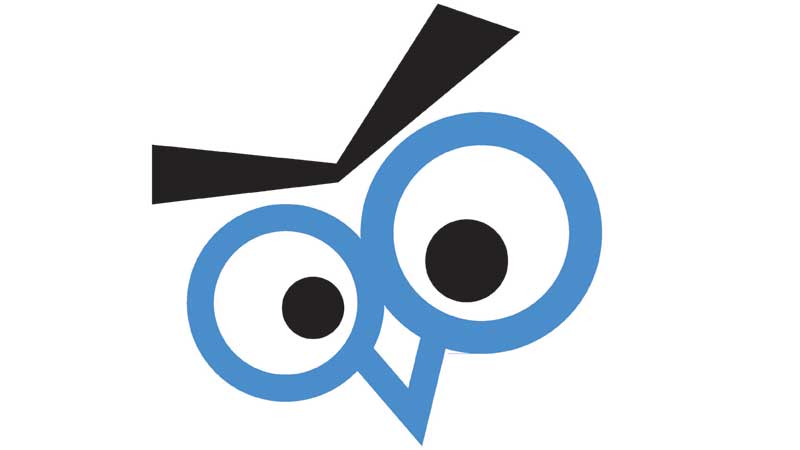

“You don’t want to see an owl because it is a bad omen!”
That perception needs to change, says Nasser al Kindy, a keen bird watcher in Oman who is also an author and a photographer.
“I remember when I was young, they used to say an owl is a wizard in disguise’’, said a young man from Musannah.
“Spotting an owl meant bad news’’, said a lady from Rustaq.
“In Syria if we come across a negative person, we would say, ‘don’t be a boom (owl), be positive’’, said Ali from Syria.
In some cultures, owls are considered a sign of bad luck, and a lot of time an owl was also associated with death news.
Was it because it is a bird of the night, was it because of their eyes or the ability to turn around its neck? Or could it have been their eerie hoot in the middle of the night?
Almost all cultures of the world have something to say about owls.
Now Nasser would like to differ. “Owls are good birds to have around the neighbourhood’’, he said.
“We need to preserve them’’, he added.
Owls, at least a large proportion of them, are nocturnal. Their hunting skills can be very beneficial for mankind as they keep a population check on pests.
He is an environmentalist and an active volunteer. He remembers 2011 when he developed an interest in the environment due to owl. “Funnily enough, I had begun to take an interest in photography when I took a picture of an owl much before, maybe around 2009. We had stopped to take coffee near the water well and it was around 11 am. There was this owl very close to us and I started taking pictures of it. When I came back to Muscat I tried my best to learn more about it. That is how I became more interested in birds and environment and their fascinating lives as well as biodiversity.”
Nasser continues to travel extensively throughout Oman, particularly in winter and autumn when temperatures are more relaxed, and the seasons for the migrating birds coming to Oman.
“In summer, we have birds migrating to the southern parts of Oman because of the monsoon in Dhofar. We get to see nice colourful birds coming from Africa to make use of the banquet provided by the monsoon’’, Nasser explained.
Covid-19 has limited a few things just like many other activities. However, Nasser feels it has provided him and the other photographers with the opportunity to spend more time with nature. Many other outlets closed, but nature was always available.
Even while you are in Muscat one can come across an owl.
“I once photographed a Barn owl. Barn owls have white plumage so they are effortless to identify. And some people told us they live close to Grand Hyatt and we see them everyday’’, noted Nasser.
According to Nasser, in Oman about 14 species of owls can be sighted. The Lillith’s owls have also been spotted in Muscat and are found to be abundant. The popular one is the Omani owl then there is the desert owl, which was formerly known as Hume’s owl. Owl enthusiasts are known to visit Oman just for them as one blogger writes about hearing them first before spotting them, such as Arabian scops-owls, Arabian eagle-owl. Still, all of their calls come at night and the enthusiasts do not mind moving around to spot them as one blogger writes — iainsowls.blogspot.com.
There is a need for more statistics on owls in Oman. A first time study published in Zoology in the Middle East on the diet of the Omani owl, Strix butleri, revealed total of 22 individual prey items which represented three mammals (rodents), at least two undetermined gecko species and one scorpion.
The study was conducted by Zuhair S Amr, Magnus S Robb, Joao Nunes, Mohammad Abu Baker and Alyn Walsh.
“They begin to get active before sunset. If you are lucky, one or two hours before sunset as well as in the early hours of the morning after the sun has risen, some owls continue to hunt. They have different types of nests and breeding grounds.
The myths about owls are not positive and because we call them myths, they are not valid. Owls are actually good for humans because they help us get rid of many pests such as mice. An owl can eat up to 10 mice a day. So let us help them thrive and leave them to do what they do. Owls are considered as bad omen, just like cats, but they are not. Owls are good’’, pointed out Nasser.
He says so keep an eye on the owls but also keep a safe distance not to disturb them. Owls are not aggressive and most humans are mesmerised by them if not for the myths. Today owls, however, are becoming fashion statements as jewellers have found great inspiration in them.
The data on owls is deficient. Maybe it is time to listen to the call of the night guard.
Lakshmi Kothaneth
@lakshmioman
Oman Observer is now on the WhatsApp channel. Click here



